Reaching the most vulnerable communities
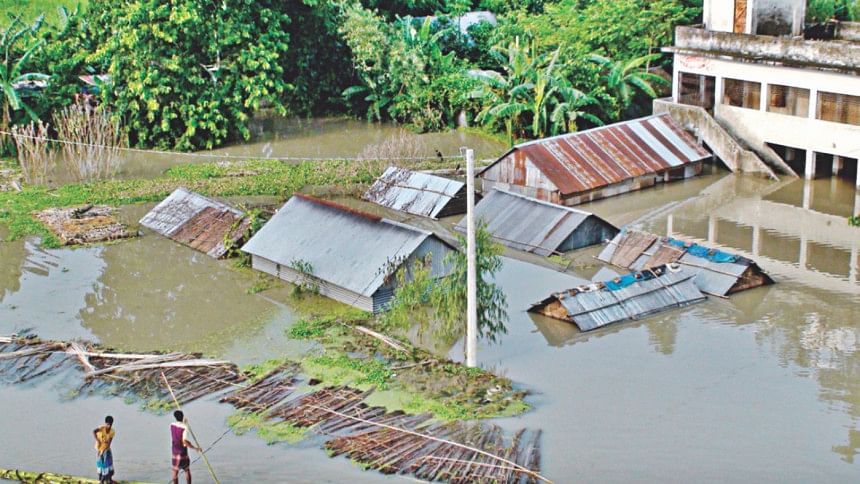
Flood refers to any destructive movement of water on a large scale. Given the hydrology, climatic factors and the geology, Bangladesh is naturally prone to floods. Floods in this country cause huge devastation, affecting the most impoverished who live on the fringes, at great risk from flooding. The poor always face sufferings and difficulties to cope and overcome the losses incurred. Recently, continuous heavy rains in the upstream catchments of India and inside of Bangladesh caused flooding in northern and north-eastern districts of Bangladesh. Flood has already claimed 21 lives. 3.1 million people have been marooned while 8,140 households washed away in two weeks. The flood situation is worsening gradually with inundation of fresh areas due to sharp increases of water in the country's major rivers. Many people in 65 upazilas under 16 districts were facing acute food and water crises amid shortage of relief items.
The Directorate of Disaster Management data showed that Tk 55 million and 6,000 tonnes of rice were distributed so far among 3.1 million affected-people. The Bangladesh Bank in a statement requested the scheduled banks and other non-bank financial institutions to provide the flood-affected people in the northern and other regions with necessary relief items.
The central bank requested on Monday that they help the flood-hit people with food, clothes, fresh water, medicines, portable improved cooking stoves, portable solar lanterns, portable pico home systems (small solar home systems under 20 watt) under their corporate social responsibility (CSR) activities.
The risk to hygiene, water and sanitation situation is a major concern in the present flood scenario. Drinking water sources remain contaminated and latrines, if available, are damaged, leading to increased risk of diarrhoea and other waterborne diseases. The open-air defecation practices of people might promote fatal diseases.
The families who lost their houses fully or partially are now living in temporary shelters, on embankments, or seeking refuge in neighbouring places / villages. The houses made of mud and thatch could not withstand water inundation and started collapsing as flood water receded. The worst affected families do not have the financial ability to rebuild / repair their homes.
No / lack of employment opportunity is the major constraint to the affected peoples' livelihoods.
Severe erosion and siltation of land will be a major problem in some of the affected districts. Hundreds of households have been left without houses and homesteads with large areas of their land being covered with a thick layer of sediment and sand, making immediate recovery of agricultural land impossible. Other households have even lost their land to the river waters.
Markets and other community places, like rural markets, school grounds and health centres in the flood-affected areas have been affected by erosion and inundation. Rural earthen roads have been badly damaged and submerged by the floods affecting internal communication of people and, thus, adversely affecting their market potential.
Flood affected communities will face great difficulties to get through the next three to four months until the next winter crop harvest in December 2016. In spite of the government emergency response being observed / reported, according to media and concerned section, it is still inadequate considering the needs and coverage of the affected people. A huge number of people in the affected areas now require various types of rehabilitation and retrieval support. Considering the above context, short-term and mid-term supports are urgently needed for the affected communities. These supports could focus on: risk reduction of water-borne diseases among affected households through access to safe drinking water, appropriate sanitation facilities and hygiene awareness activities, aggregation of food and income security through Targeted food Assistance, Cash-for-Work and Agricultural support (seed, cash, fertiliser etc.) activities and providing house building / repairing provision for the most vulnerable people.
Necessities of displaced populations taking shelter in different places (flood shelters, embankments) mostly are food, shelter, water and sanitation. The livelihood programme is likely to be more dominant later on.
Intervention options that was utilised in past flood emergencies of previous years include distribution of hygiene kits, mosquito nets, tarpaulin sheets and other basic relief materials, food distribution (often a combination of both dry food and wet food) temporary shelter, water treatment (Alum and Halogen Tablets), water storage support (water tanks), water extraction and supply (tube-well sets), sanitation, disinfestations of water sources, waste disposal and gender specific material (sanitary napkins / clean cloth) could be reviewed quickly for making a package of an emergency assistance. This list of options is not exhaustive.
The media has already reported that the shortage of food and drinking water is causing sufferings to the most vulnerable of people in certain areas. The relevant Government authorities, thus, should ensure emergency relief and rehabilitation assistance for the neediest of people, without undermining peoples' dignity and ability. Ensuring quick, well coordinated and effective management of flood response and rehabilitation activities with the involvement of local governments, NGOs and other relevant actors is the prime responsibility of the Ministry of Disaster Management and Relief at this moment. Proper targeting, programming, monitoring and coordination should be ensured in line with Standing Orders of Disasters and Disaster Management Act 2012.
The government authorities and other development actors should also think about how their development initiatives in flood prone areas are resistant to the current flood situation (which is still not as severe as that of 2004, 1998 and 1988) and what more can be done, or differently, and integrate them into their flood management programme to reduce risks and the negative consequence of future floods.
The writer is a former adviser to the Swiss Embassy in Dhaka.

 For all latest news, follow The Daily Star's Google News channel.
For all latest news, follow The Daily Star's Google News channel. 

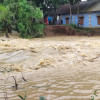
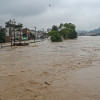
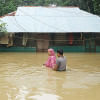

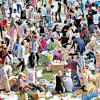

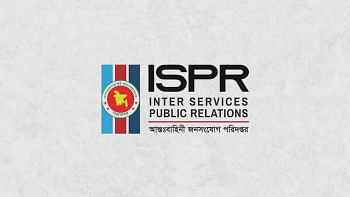
Comments